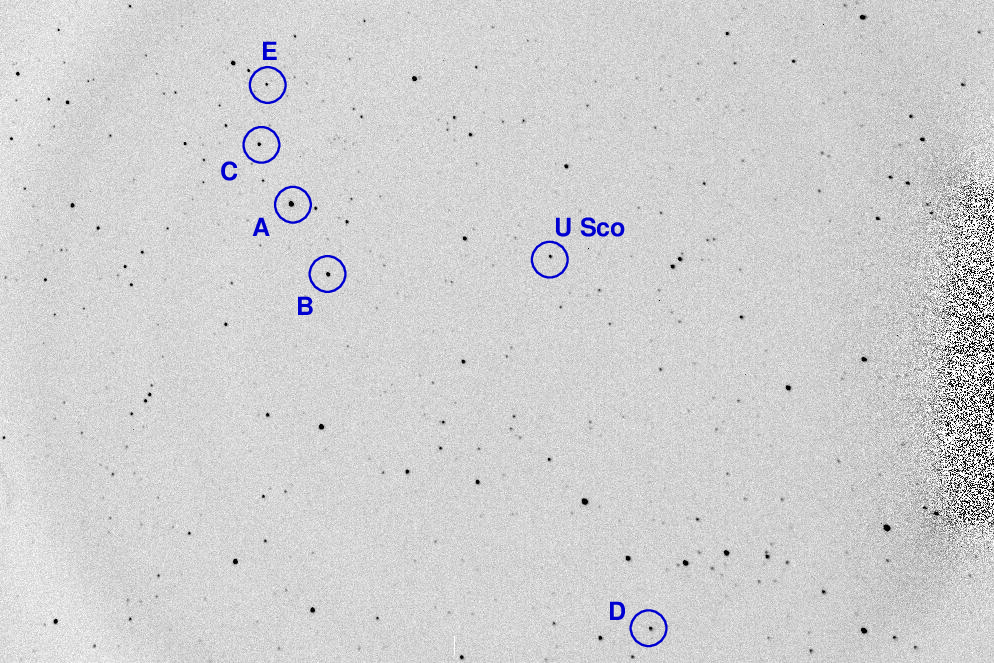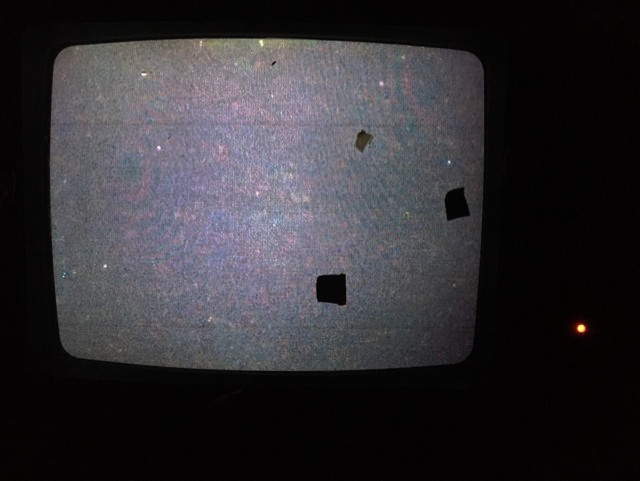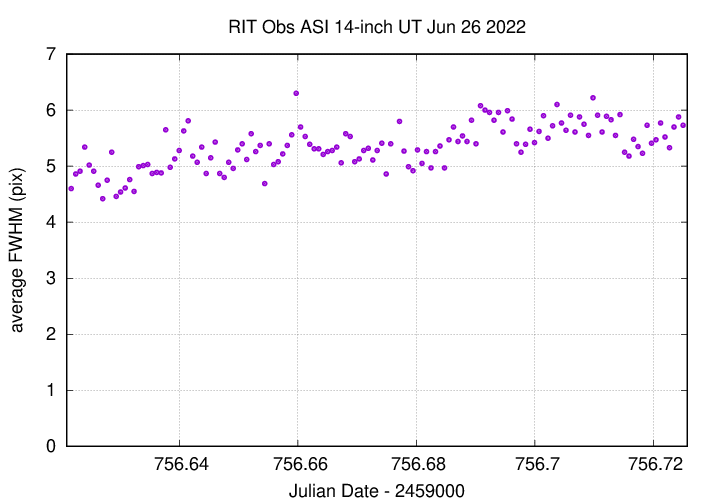
On the night of Jun 25/26, 2022, under fair-to-good conditions, I acquired images of the outbursting cataclysmic variable star U Sco and the over-the-hill Nova Her 2021 = V1674 Her.
This was the first time in quite a while that I had run two telescopes simultaneously: I used the ATIK CCD camera on the 12-inch to measure U Sco, and the ASI CMOS camera on the 14-inch to observe Nova Her 2021. I had to replace one old USB cable, but otherwise, things went pretty well.
U Sco is a cataclysmic variable which only rarely is caught in an outburst. This one was first noticed at UT 2022 June 6.720 by Masayuki Moriyama. The star reached a peak brightness of about V = 8, but faded quite a bit by this evening; it is currently about V = 14.
The main setup was:
Notes from the night:
The object is located at
RA = 16:22:30.78 Dec = -17:52:42.8 (J2000)
A chart of the field is shown below. The size of the chart is about 42 x 30 arcminutes.

I've marked the location of several comparison stars as well, which appear on the AAVSO chart of comparison stars.
I'll use star "A" to shift my instrumental magnitudes to the V-band scale.
I took a photo of the finder TV's screen when pointing to this target; this could be a useful reference for the future:

The sky value shows a few hints of minor clouds. I also didn't move the dome properly a few times.

The FWHM graph below shows a rise as the temperature dropped during the run.

Using aperture photometry with a radius of 7 pixels in clear filter (binned 2x2, each pixel is 1.25 arcsec, so a radius of 8.8 arcsec), I measured the instrumental magnitudes of a number of reference stars and the target. Following the procedures outlined by Kent Honeycutt's article on inhomogeneous ensemble photometry, I used all stars available in each image to define a reference frame, and measured each star against this frame.
Sigma-vs-mag plots show that the floor was about 0.015 mag; that's not very good for this field.

The change in zeropoint shows the coming and going of light clouds.

The measurements are noisy, but show little change.

You can download my measurements below. A copy of the header of the file is shown to explain the format.
# Measurements of U_Sco made at RIT Obs, UT 2022 Jun 26, # in fait conditions, # by Michael Richmond, # using Meade 12-inch LX200 and ATIK 11000. # Exposures 30 seconds long, clear filter. # Tabulated times are midexposure (FITS header time - half exposure length) # and accurate only to +/- 1 second (??). # 'mag' is a differential magnitude based on ensemble photometry # using a circular aperture of radius 7 pix = 8.8 arcseconds. # which has been shifted so AAVSO 000-BBX-431 has mag=10.707 # which is its V-band magnitude according to AAVSO. # # UT_day JD HJD mag uncert Jun26.09330 2459756.59330 2459756.59850 14.128 0.061 Jun26.09603 2459756.59603 2459756.60123 14.053 0.057 Jun26.09649 2459756.59649 2459756.60169 14.143 0.062
This star brightened in 2021, obviously, but is still being followed by the CBA. It is very faint for our equipment, but I decided to try observing it with our bigger (14-inch) telescope and new camera. The results show that this object, at about V = 17.1, yields measurements with an uncertainty of about 0.2 mag each. That's too large to be useful in this case, alas.
The main setup was:
Notes from the night:
Below is a closeup of the field around V1674 Her. Stars K, L, M all appear in the AAVSO chart and table of photometry for the variable, as stars 122, 132, and 137, respectively.

Based on tonight's 60-second images with clear filter in the ASI 6200MM camera, one can achieve roughly the following precisions in ensemble photometry on a moonless night with a bit of cloud.
V mag typical scatter (mag)
-------------------------------------------
12.2 0.007
13.2 0.008
13.7 0.013
14.2 0.016
15.2 0.036
16.2 0.085
17.1 0.21
--------------------------------------------
Last modified 6/27/2022 by MWR.